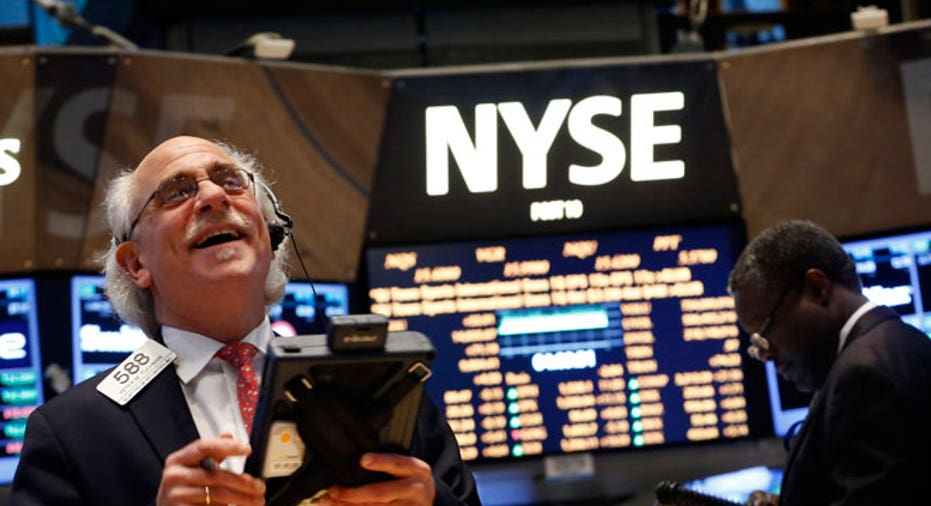Stocks Burst Higher, Snap Nine-Session Losing Streak, After FBI Clears Clinton

After a nine-day losing streak, U.S. equity markets saw a sharp reversal in momentum on Monday sparked by an announcement over the weekend that Democratic presidential nominee Hillary Clinton would not face criminal charges related to ongoing controversy around her email use.
The Dow Jones Industrial Average jumped 371 points, or 2.08% to 18259 – its best presidential Election Day eve performance since 1932, according to data from Dow Jones. The S&P 500 advanced 46 points, or 2.22% to 2131, while the Nasdaq Composite gained 119 points, or 2.37% to 5166. All 11 industry sectors were in positive territory as health care, financials, and tech led the way higher.
The surge came a day after FBI Director James Comey, in a letter to Congress, said a review of a new batch of Clinton emails did not change the agency’s July conclusion that no changes were necessary in an investigation of her use of a private email server while she served as Secretary of State. The decision came two days before voters head to the polls to cast their ballots for the next president.
Wall Street’s momentum put the major averages on track for their biggest gains in eight months; just one session after the S&P capped its longest losing streak since 1980.
The markets view Clinton as a status-quo candidate, while Republican nominee Donald Trump's stances on foreign trade and immigration are believed to be more uncertain. With questions around Clinton’s emails seemingly put to bed, financial markets are likely to double down on the probability she will win the election, said Luke Hickmore, senior fixed income fund manager at Aberdeen Asset Management.
“No one should conclude that this campaign is over or that Hillary is going to win, though,” he said. “Financial markets are edging toward Clinton largely because of polling, and we saw in the U.K.’s Brexit referendum how wrong that can be. The memory of that referendum should loom large in investors’ memories.”
Clinton’s lead Trump widened in the latest RealClearPolitics average. Her 1.7-point lead on Friday moved to 2 points on Monday following the FBI’s announcement.
With Clinton expanding her lead in the polls, the Mexican peso rose the most against the U.S. dollar in four weeks. In recent months, the peso’s moves have emerged as Wall Street’s favorite proxy for betting on the U.S. presidential race. Meanwhile, against a basket of global currencies, the greenback rose for the first time in five days.
With risk assets back in favor, investors bid up the price of crude, which six-straight sessions of losses. West Texas Intermediate rose 1.86% on Monday to $44.89 a barrel, while Brent traded up 1.25% to $46.15 a barrel.
Safe havens saw selling pressure as the price of gold saw its biggest decline in five weeks. The precious metal slipped 1.9% to $1,278 a troy ounce, while silver also declined 1.19% to $18.12 a pound. Investors piled out of government debt as the yield on benchmark 10-year U.S. Treasury bonds rose to 1.83%. Yields move in the opposite direction of prices.
Meanwhile, the market’s gauge of expected volatility over the next 30 days saw its first down day in 10 sessions, snapping its longest-ever streak of gains. The VIX, commonly referred to as Wall Street’s fear gauge, spiked to 22 last week, but slipped on Monday to 18.7.
While the presidential election has dominated the conversation and swayed the market’s direction, once a winner is determined, the most likely outcome is continued gridlock in Washington, said Jason Pride, Glenmede director of investment strategy.
“Election results may affect markets near term, however, regardless of election results, gridlock is likely to prevail…investors should be wary of any large moves in industries or sectors due to the election outcome. Gridlock means the president-elect may not be able to accomplish all they desire,” he said.
Using history as a guide, CFRA’s chief investment strategist, Sam Stovall, said stock market performance in election years have averaged weaker returns than on non-election years thanks to campaign fatigue. On average the S&P 500 booked 2% gains, however during years in which an incumbent president or party took the White House, gains were trimmed to 1.7%.



















